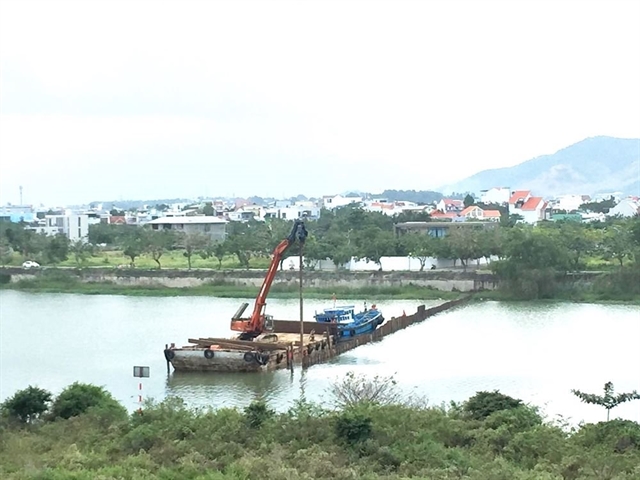 Society
Society

The central city has begun construction of a steel dam – the second of its kind – on the lower Cẩm Lệ River to reduce salinity and deal with serious water shortages in the dry season this year.

|
| Work starts on the second temporary dam on the Cẩm Lệ River in Đà Nẵng. The dam will help reduce high salinity and a lack of fresh water for the city. — VNS Photo Lan Anh |
ĐÀ NẴNG — The central city has begun construction of a steel dam – the second of its kind – on the lower Cẩm Lệ River to reduce salinity and deal with serious water shortages in the dry season this year.
General director of the Đà Nẵng Water Supply Company (DAWACO), Hồ Hương, told Việt Nam News the project was urgently needed to solve serious saline intrusion this year.
He said the city would face water shortages this summer when the upstream flow was forecast to be lower between April and September.
Hương said the two temporary dams, which would cost a total of VNĐ13 billion (US$565,000), would help the city collect enough fresh water to deed the Cầu Đỏ water plant.
He said the first 180m long dam, which was completed in late January, had helped reduce salinity in the river to less than 1,000mg of salt per litre – a ratio possible for fresh water collection.
The second dam, which started construction on Monday, would help lower the ratio to between 500mg and 600mg per litre.
According to the regional meteorological station, water flow from upstream would fall from 40 to 90 per cent, and salinity would reach more than 6,000mg salt per litre – higher than the worst salinity recorded in 2019 (5,109mg per litre).
Meanwhile, the city has also upgraded the An Trạch pumping station to collect enough fresh water to supply the city’s demand of 310,000cu.m each day.
Experts from DAWACO said the steel panel structure was used to deal with salinity in the Mekong Delta River, and could be rapidly deployed and removed.
Earlier this month, Đà Nẵng asked management boards of the A Vương and Đắk Mi 4 hydro-plants to discharge water from their reservoirs to save the city from serious salinity that lasted 36 days.
Last year, the city’s water supply could only meet 70 per cent of demand due to high salinity at the Cầu Đỏ water plant – the main source of fresh water for 1 million residents and tourists.
Water shortages in Đà Nẵng have been occurring for several years now, resulting from deforestation, low rainfall and the operation of hydropower plants on the Vu Gia–Thu Bồn river system covering Quảng Nam and Đà Nẵng. — VNS




